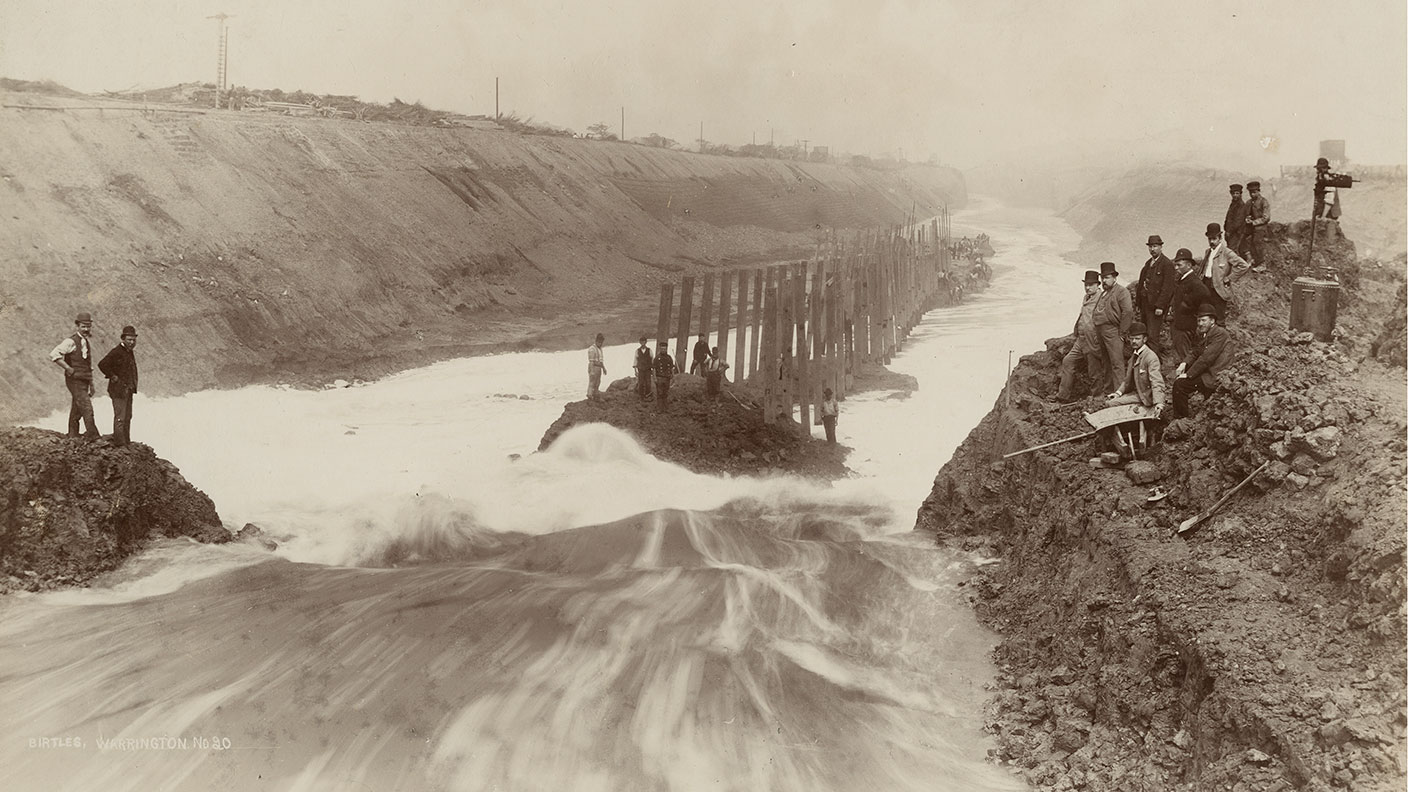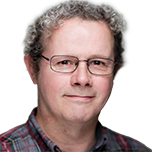
These days, you're more likely to see a TV presenter than a docker at Salford Quays, but 100 years ago, the area was a flourishing new port.
By the mid-19th century, Manchester was one of the empire's busiest industrial cities, and was at the heart of the cotton industry. But the high fees charged by both Liverpool docks and the railway companies were eating into the cotton barons' profits.
And so in 1882 industrialist Daniel Adamson proposed building a waterway that would enable the city to bypass Liverpool altogether and bring ships into the heart of Manchester. Plans were drawn up and a bill submitted to Parliament. The bill was, predictably, opposed, by Liverpool's Mersey Docks board, and failed. But after three readings, and a 200,000-strong petition from the people of Manchester, the Manchester Ship Canal Act was finally passed in 1885, and work began on this day in 1887.
MoneyWeek
Subscribe to MoneyWeek today and get your first six magazine issues absolutely FREE

Sign up to Money Morning
Don't miss the latest investment and personal finances news, market analysis, plus money-saving tips with our free twice-daily newsletter
Don't miss the latest investment and personal finances news, market analysis, plus money-saving tips with our free twice-daily newsletter
The canal is 36 miles long and rises 18 metres from the coast to the centre of Manchester. Seven docks were built to take the ships. It opened for business on 1 January 1894. The estimated cost of construction was £5.16m. It would eventually cost £15m.
Soon Manchester was Britain's third-busiest port. The amount of goods handled increased year by year and peaked in 1958 at 18.2 million tonnes. But with the restricted size of vessels able to use it, and the growth of road transport, it began to decline, reaching a low point in 1984. The maximum length of vessels able to navigate the canal is 160m with a beam of 19m and a maximum draft of 7.3m. The 48-mile Panama Canal, by contrast, opened just 20 years later, can take ships up to 290m long and carries 300 million tonnes of shipping a year.
The canal is undergoing something of a renaissance, and currently handles some eight million tonnes of freight a year. It is owned and operated by the Peel Group, a privately held company that operates ports around the country, including Liverpool, and has extensive property interests.
Get the latest financial news, insights and expert analysis from our award-winning MoneyWeek team, to help you understand what really matters when it comes to your finances.
Ben studied modern languages at London University's Queen Mary College. After dabbling unhappily in local government finance for a while, he went to work for The Scotsman newspaper in Edinburgh. The launch of the paper's website, scotsman.com, in the early years of the dotcom craze, saw Ben move online to manage the Business and Motors channels before becoming deputy editor with responsibility for all aspects of online production for The Scotsman, Scotland on Sunday and the Edinburgh Evening News websites, along with the papers' Edinburgh Festivals website.
Ben joined MoneyWeek as website editor in 2008, just as the Great Financial Crisis was brewing. He has written extensively for the website and magazine, with a particular emphasis on alternative finance and fintech, including blockchain and bitcoin.
As an early adopter of bitcoin, Ben bought when the price was under $200, but went on to spend it all on foolish fripperies.
-
 Zoopla: house price growth stalled in 2025 but forecasts for 1.5% higher next year
Zoopla: house price growth stalled in 2025 but forecasts for 1.5% higher next yearSales soared this year with more than a million deals done but buyers drove hard bargains keeping a lid on prices. A small bounceback in valuations is predicted for 2026, depending on where you live.
-
 UK sets out crypto regulatory proposals
UK sets out crypto regulatory proposalsThe government has tabled legislation that sets out a regulatory framework for cryptocurrencies, while the regulator will consult on balancing innovation and consumer protections
-
 31 August 1957: the Federation of Malaya declares independence from the UK
31 August 1957: the Federation of Malaya declares independence from the UKFeatures On this day in 1957, after ten years of preparation, the Federation of Malaya became an independent nation.
-
 13 April 1960: the first satellite navigation system is launched
13 April 1960: the first satellite navigation system is launchedFeatures On this day in 1960, Nasa sent the Transit 1B satellite into orbit to provide positioning for the US Navy’s fleet of Polaris ballistic missile submarines.
-
 9 April 1838: National Gallery opens in Trafalgar Square
9 April 1838: National Gallery opens in Trafalgar SquareFeatures On this day in 1838, William Wilkins’ new National Gallery building in Trafalgar Square opened to the public.
-
3 March 1962: British Antarctic Territory is created
Features On this day in 1962, Britain formed the British Antarctic Territory administered from the Falkland Islands.
-
10 March 2000: the dotcom bubble peaks
Features Tech mania fanned by the dawning of the internet age inflated the dotcom bubble to maximum extent, on this day in 2000.
-
9 March 1776: Adam Smith publishes 'The Wealth of Nations'
Features On this day in 1776, Adam Smith, the “father of modern economics”, published his hugely influential book The Wealth of Nations.
-
 8 March 1817: the New York Stock Exchange is formed
8 March 1817: the New York Stock Exchange is formedFeatures On this day in 1817, a group of brokers moved out of a New York coffee house to form what would become the biggest stock exchange in the world.
-
7 March 1969: Queen Elizabeth II officially opens the Victoria Line
Features On this day in 1969, Queen Elizabeth II took only her second trip on the tube to officially open the underground’s newest line – the Victoria Line.

